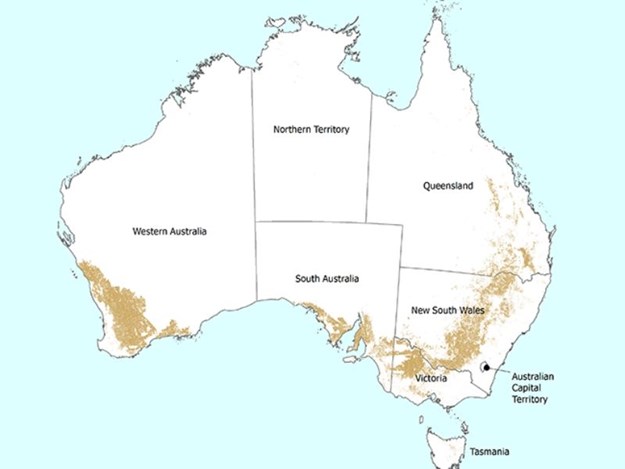Australia’s winter crop production is set to fall by three per cent according ABARES crop report
 |
|
Australian cropping land use – Courtesy of ABARES
|
According to the report, 2019–20 will see a drop to 29.4 million tonnes, which is down 13 per cent from the production forecast in September.
ABARES Acting Executive Director Peter Gooday says the revised forecast is a reflection of poor early spring conditions in most cropping regions like Western Australia and southern New South Wales.
“Forecast winter production is around 27 per cent below the 10-year average to 2018–19 and is set to fall for the third consecutive year since record-high production was achieved in 2016–17,” Gooday says.
“Below-average rainfall and above-average temperatures during spring reduced winter crop prospects in most cropping regions—but the changes in Western Australia and southern New South Wales had the biggest impact on national production prospects.
“High fodder prices and unfavourable seasonal conditions caused some crops planted for grains and oilseeds production to be cut for hay in regions with low levels of soil moisture at the beginning of spring.
“For the major winter crops, wheat production is forecast to decrease by eight per cent to around 15.9 million tonnes, 35 per cent below the 10-year average to 2018–19. Barley production is forecast to increase by four per cent to around 8.7 million tonnes, 3 per cent below the 10-year average to 2018–19. Canola production is forecast to fall by 4 per cent to around 2.1 million tonnes, 35 per cent below the 10-year average to 2018–19.”
The latest three-month rainfall outlook from the Bureau of Meteorology suggests summer rainfall is likely to be below average in most parts of Queensland and northern New South Wales.
“A combination of the unfavourable summer outlook and very much below average levels of soil moisture at the end of spring means summer crop production is forecast to decline by 52 per cent to around 1.2 million tonnes, which is 69% below 10-year average to 2018-19,” Gooday adds.
“Area planted to summer crops is forecast to fall by 49% in 2019–20 to around 535,000 hectares, driven by significant expected falls in area planted to grain sorghum and cotton.”
You can read the full Australian crop report December 2019 here: agriculture.gov.au/abares/research-topics/agricultural-commodities/australian-crop-report


